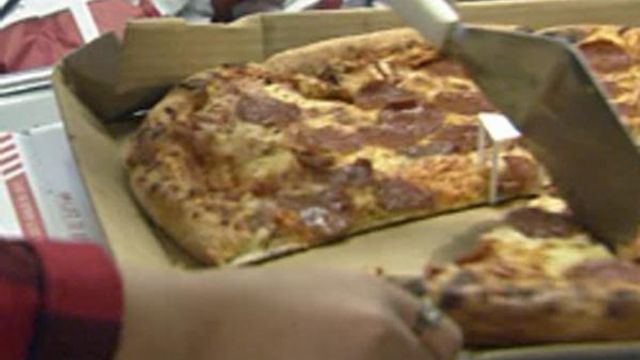Tests show school lunches high in sodium
WRAL Investigates followed six students through the lunch line recently to see what choices they made and how healthy a meal really is.
Posted — UpdatedWRAL Investigates followed six students through the lunch line recently to see what choices they made and how healthy a meal really is.
The students – two in elementary school, two in middle school and two in high school – selected what to eat.
WRAL took those same choices and portions to Analytical Laboratories in Idaho to find out how much fat, sodium and calories are in each meal.
According to dietary guidelines published by the United States Department of Agriculture, children and teens should consume an average of 1,800 calories per day. Nutritionists say that means a healthy lunch should be no more than 700 calories with 23 grams of fat and no more than 500 milligrams of sodium.
All six samples exceeded the recommended 500 milligrams of sodium; four of them had more than 1,000 milligrams. There are no federal limits for sodium in school lunches.
Ashley Honeycutt, a dietician at Rex Hospital, said the sodium levels concerned her.
“If we can catch it when they're younger and keep the sodium intake down, then they are less likely to develop high blood pressure when they age,” she said.
Marilyn Moody, senior director for Wake Child Nutrition Services, said menus in Wake County schools have been revamped in recent years to substitute more healthy choices. They serve turkey franks instead of beef hot dogs and whole grain buns on hamburgers. The chicken nuggets are baked, not fried.
Diane Dulaney's son, Brian, chose a cheeseburger, apple and a Rice Krispies treat, a meal that fell within dietary guidelines.
“I was glad to find out the bun was whole grain,” she said. “That's one of the things we try to focus on in our house.”
A lunch served at Wakefield High School was well beyond the USDA recommendations. A slice of Domino's pizza and a cup of French fries came out to 802 calories, 44 grams of fat and 846 milligrams of sodium.
A student at Leesville Road High School chose two hot dogs, fries and a banana for a total 876 calories. That meal had 40 grams of fat – more than 60 percent of the whole day’s allowance – and 1,190 milligrams of sodium.
Kids do have options, Moody said. They can choose salads, sandwiches, vegetables and fresh fruit. They can even buy snacks that are no more than 35 percent sugar by weight.
But kid-friendly foods like hot dogs, hamburgers and pizzas are on lunch menus every week.
“Our menus are driven by student preference, “Moody said. “If students do not consume the food, it does not matter how healthy it is or how nourishing it is.”
“We balance the menu over the week – high-calorie food one day, low-calorie food next day, so that in a week's time, we have met standards for a school lunch,” Moody said.
She cautioned against judging all school meals by six tests. “It was six meals out of 66,000 meals,” she said.
Bryon Spells, an eighth-grader at Heritage Middle School, chose two hot dogs, tater tots and an orange, a meal that totaled 767 calories, 37 grams of fat and 1,740 milligrams of sodium.
His father, Rodney Spells, said, “He's pretty lean and active. He needs the calories, but it would be good if it had lower fat content.”
Spells praised the Wake meals overall, saying, "They do a very good job on fruits and vegetables and sides, but the main courses could probably be healthier."
Diane Dulaney was pleased by the choice her son, Brian, made at Dillard Drive Elementary School.
"I don't think what he chose was very different from what I would've picked had I been there with him," she said. "It's all things in proportion, which I kind of felt like is what he did."
Honeycutt said parents can balance a heavy lunch with a lighter dinner.
"Parents really have to help educate the children that it is important to have an overall, balanced meal," she said.
• Credits
Copyright 2024 by Capitol Broadcasting Company. All rights reserved. This material may not be published, broadcast, rewritten or redistributed.





